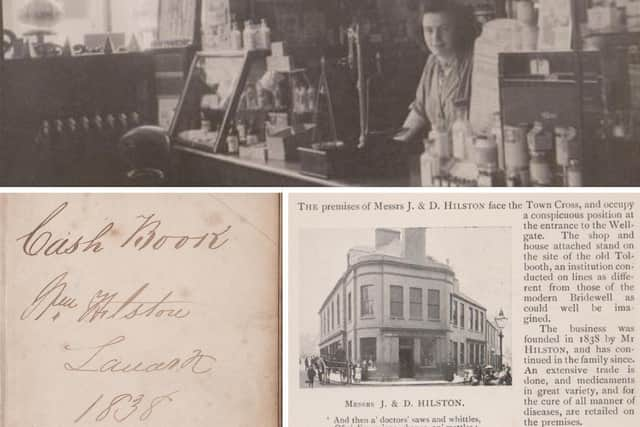Hilston's big role at Lanark's Tolbooth in the Victorian era
and live on Freeview channel 276
This was brought about by the creation of Hope Street in 1820 as the new street for churches, administration, law and order and banking.
Central to this new development was the County Buildings which was destined to be the administrative centre for Lanarkshire and its individual Burghs.
Advertisement
Hide AdAdvertisement
Hide AdWork started on this in 1830, in the time of King William IV, with a new addition being made in 1885.


Having lost its prime spot as an administrative centre for Lanark, it was decided to let the ground floor of the Tolbooth to businesses.
The first business to make good use of the ground floor was Hilston’s.
Mr Hilston, who started the business in 1838, was registered in the Apothecary’s Hall in Glasgow.
Advertisement
Hide AdAdvertisement
Hide AdFortunately we are able to get an idea of what happened as I have the original account book which covers the first eight years. It makes very interesting reading!
Many of the medicines came from the Apothecary’s Hall in Glasgow; there are regular payments of £26 and above on a monthly basis for them.
All deliveries came by coach and so different payments were made – for example, a delivery made on July 10, 1844, cost 13 shillings paid to Mr Brown the carter. He figures quite a few times in the account book.
To rent the Tolbooth from the Royal Burgh of Lanark was a major item of expenditure costing £12 10 shillings for every six months whereas we read that shop assistant Martha Ramsay was paid £2 a year for her services. However, by 1845 Mary Campbell was being paid £4 a year which was a lower rate than a domestic servant at that time.
Advertisement
Hide AdAdvertisement
Hide AdHeating for the premises was provided by the regular purchase of coal while lighting was provided by the Lesmahagow Gas Company. The Gas works in Lanark was located above the Kirkfieldbank Brae. It stood on the right hand side of the Brae as it descends towards Kirkfieldbank.
The coal for this company came from Auchenheath where the finest gas coal came from J.D Ferguson’s mines. The cost for lighting for Hilston’s was £7 10shillings per annum so it was relatively cheap by modern standards.
From time to time Hilston’s would have to pay five shillings for what was known as Statute Labour which was basically a road maintenance charge.
This tax was levied on those people who did not want to help on road maintenance. This tax went back prior to the age of toll houses and the new Telford road system.
Advertisement
Hide AdAdvertisement
Hide AdAs well as income tax, Hilston’s was expected to pay towards Poor Relief the sum of five shillings annually.
During the 1840s the poor house was down the Bloomgate. It is the crow stepped gabled house which stands back from the street. The women were lodged upstairs and the men downstairs.
The information above gives a fascinating insight into the early days of one of the most important pharmacies in Lanark.
Despite all the charges and costs, Hilston’s made a regular profit of over £150 per annum.